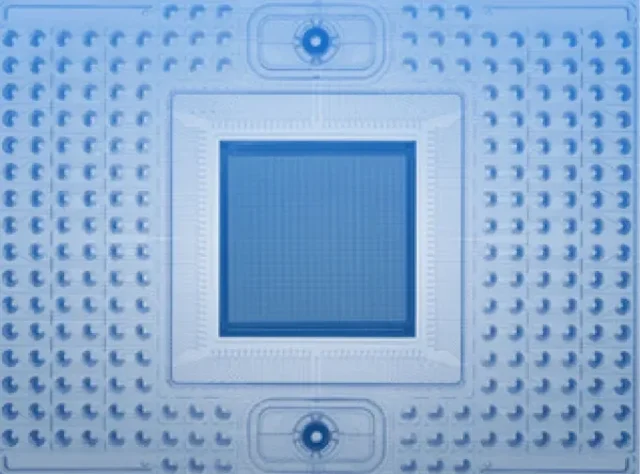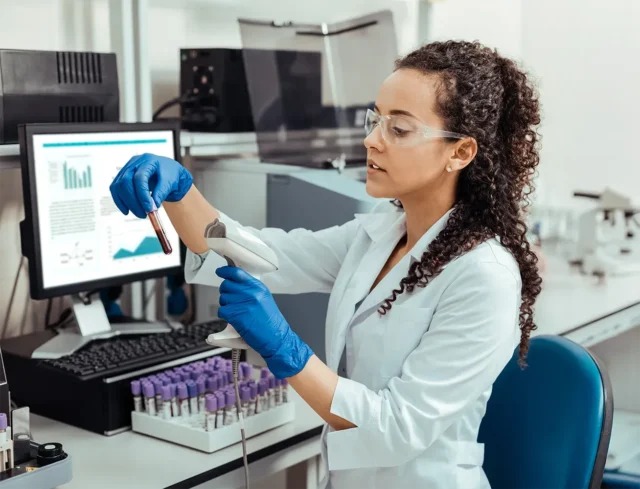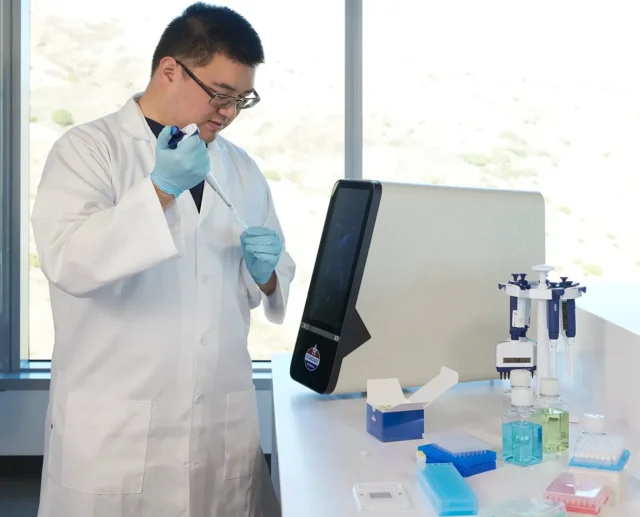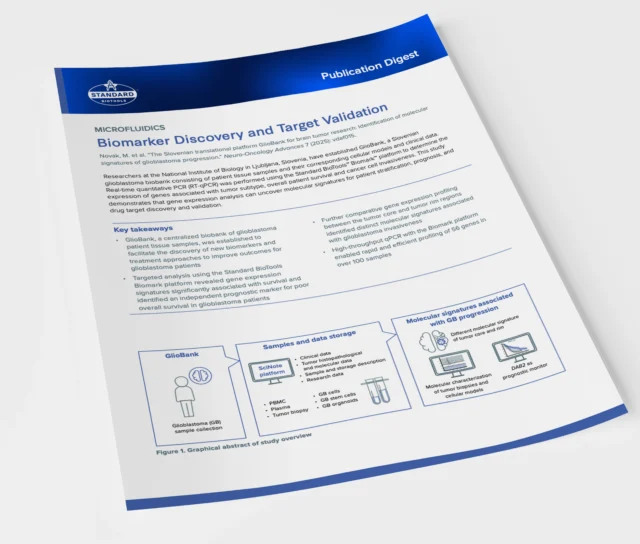Where scalable gene expression analysis delivers values
A growing number of initiatives require expanding genomic applications to match larger-scale clinical and translational research studies. The ability to scale analysis enables the generation of larger and more comprehensive genetic profiles – covering multiple therapeutic areas such as immunology, oncology, neuroscience and metabolic disorders.


With a unique technology that easily supports analysis at scale, Biomark systems empower effective discovery and development, revealing the context and interactions between drugs, diseases, treatments and genes.
Key challenges in drug development gene expression studies
Low sample throughput limits study scale
Traditional platforms are slow and costly for large multi-timepoint or dose-response studies.
Limited sample availability
Scarce clinical or preclinical samples demand low-input, high-sensitivity solutions.
High cost and complex workflows
Sequencing methods require expensive reagents, infrastructure and long analysis times.
Long turnaround delays decisions
Slow workflows limit rapid assessment of drug response and patient stratification.
Accelerate drug development with the Biomark X9 System

Biomark systems use microfluidic chips to generate 100x more data in one run than traditional plate-based real-time PCR workflows, accelerating the detection of relevant disease associations.
This offers unparalleled efficiency in drug development and capabilities to carry potential targets through safety and efficacy testing and validation with confidence.
Biomark systems combine the benefits of high multiplexing with the ease of singleplex reactions
Biomark platforms provide the advantages of multiplexing without the inefficiencies and complexity of having to manage mixed primer pairs and probes. This is accomplished using microfluidics-based chips, in which thousands of miniaturized individual reactions run in parallel, saving sample volume, assay development time and issues with fluorescent channel overlap. While many platforms offer either high multiplexing features at the cost of complex workflows or simplicity at the cost of scale, Biomark systems offer efficiency, high content generation and ease of use, ideal for fast-paced clinical research settings.
| 96- or 384-Well Plate-Based Conventional Workflow | Biomark System with IFC-Based Workflow | |
|---|---|---|
| Number of assays per sample | Low | High |
| Scalability (sample throughput) | Challenging (design complexity increases with project size and need for multiplexing) | Easy |
| Multiplexing | Needs optimizations | Optimization not necessary (multiplex throughput with singleplex workflow) |
| Automation | External | Built-in |
| Sample input | High | Low |
| Turnaround time* | 84 days | 4 days |
| Cost per reaction | High/medium | Low |
* Using 1,000 samples by 96 assays (get more information about these calculations)
Achieve gold-standard data quality and precision in a faster, fully automated workflow
Integrated fluidic circuits (IFCs) form the backbone of the Biomark X9 System, supporting different configurations of samples and assays for simultaneous profiling of multiple types of genomic assay readouts. Each Dynamic Array™ IFC is precision-manufactured to exacting standards of performance and reliability.
Supporting clinical and translational deployment with consistent, high-quality output
With the ability to generate genotyping and gene expression results in approximately four hours, Biomark systems significantly quicken decision-making throughout clinical and translational research phases compared with traditional RNA-seq methods. This fast and consistent data generation supports go/no-go decisions early in the clinical development process, reducing risks and costs associated with late-stage failures.
The Biomark X9 System ensures high-throughput data generation alongside data reliability and quality, which is crucial for drug discovery and development pipelines. A wide dynamic range and linear amplification provides higher confidence in results through better analytical performance, ensuring reproducible amplification across 96 samples at once.
Case Studies
Resources
D3 Genomic Services
Improve study designs and optimize results using D3™ Assay Design service. Access the latest in genomic analysis – including pharmacogenomic analysis, respiratory pathogen detection, and biomarker discovery and validation – for every project and from any sample type.

Meet the Biomark X9 system
The Biomark X9 System empowers faster and better genotyping and gene expression workflows than conventional systems, simultaneously detecting up to 96 targets against 96 samples with an automated singleplex approach. Using only nanoliter-scale reactions reduces consumable costs and minimizes waste for a cost advantage without compromising data quality.
Capitalize on operational efficiency with an automated workflow that minimizes hands-on time, leading to lower labor costs and faster project turnaround.





